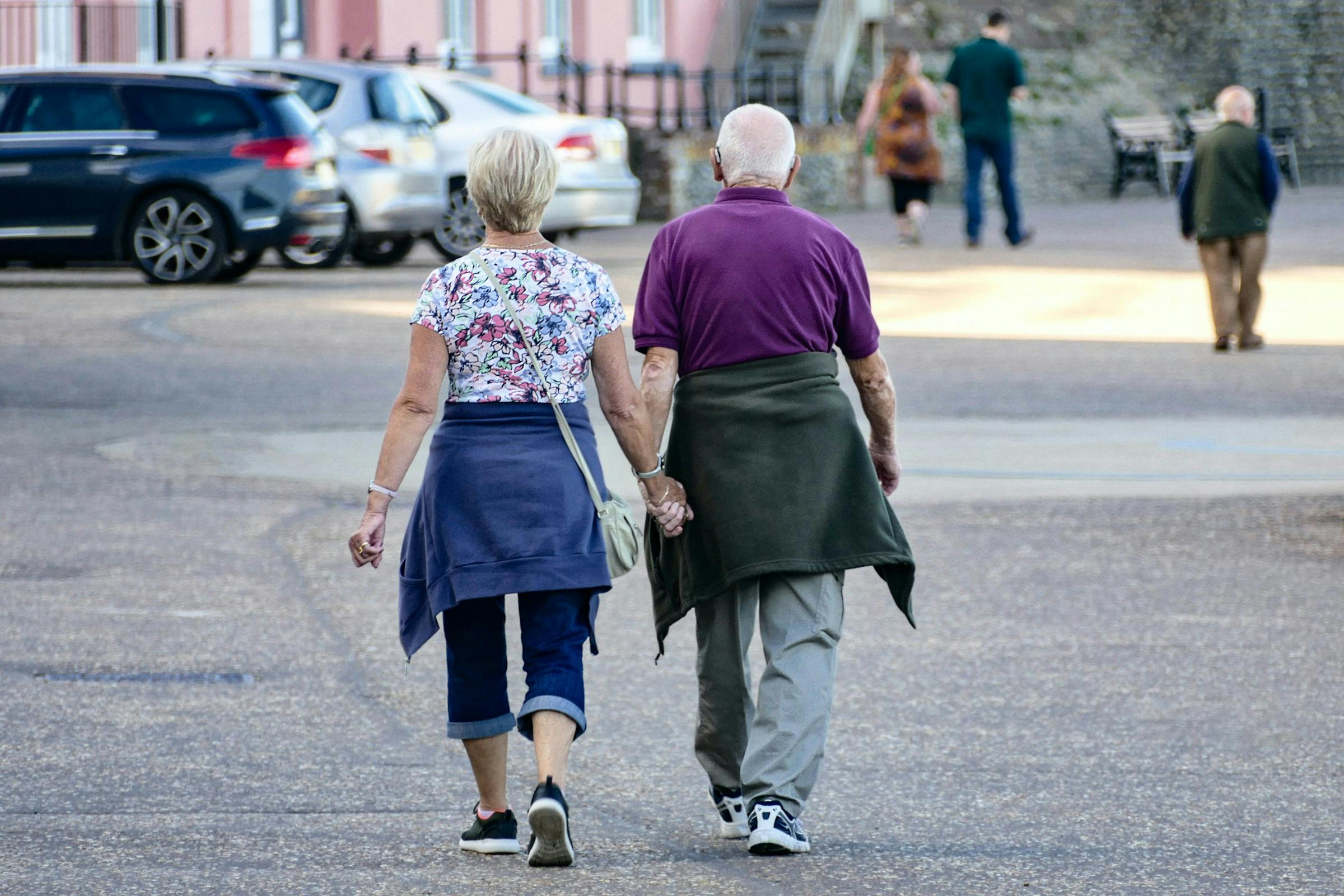5 Science-Backed Longevity ‘Hacks’ That Don’t Cost a Fortune
By Editorial Team
Reviewed by Dr. Daniel Uba, MD
Published Apr 22, 2025
12 min read

If you've ever Googled “how to live longer,” you’ve probably run into endless suggestions involving expensive supplements, pricey biohacking gadgets, or complicated wellness routines. And while some of those may work, the truth is, you don’t need to spend a fortune to live a long, healthy life.
In fact, some of the best longevity “hacks” are completely free — and backed by solid science.
This article will walk you through five simple, proven, and affordable strategies you can start using today. They’re easy enough for anyone to try, effective enough to make a real difference, and budget-friendly enough to stick with for the long haul.
Ready to add more years (and quality) to your life — without draining your wallet? Let’s dive in.
1. Get Morning Sunlight to Reset Your Internal Clock
You’ve probably heard that getting good sleep is important. But did you know that how you wake up and what you do in the first hour of your day can impact your entire biological clock?
It all starts with sunlight.
Your body runs on a 24-hour cycle called the circadian rhythm. It’s like your internal timekeeper, telling you when to wake, eat, move, sleep, and even when to release important hormones. And one of the strongest signals to keep this rhythm in sync is morning light.
Why Morning Sunlight Matters
When you step outside and get sunlight in your eyes (don’t worry, not directly staring at the sun!), light-sensitive cells in your retina send a signal to your brain that says, “It’s morning — time to get going.”
This single signal kicks off a series of important events:
- It helps your brain release cortisol, a hormone that boosts alertness and energy.
- It starts a timer for your nighttime melatonin release, helping you fall asleep more easily later.
- It improves your mood, metabolism, and immune system regulation.
Longevity Benefits
Getting your circadian rhythm aligned improves your sleep quality, lowers inflammation, balances blood sugar, and reduces your risk of diseases like type 2 diabetes, cardiovascular disease, and even Alzheimer’s.
Sleep isn’t just about rest — it’s when your body repairs itself. So poor sleep means poor recovery, more stress, and faster aging.
How to Do It (And Why It’s Free)
Try going outside within 30–60 minutes of waking up. Just 10–20 minutes of natural light exposure can help reset your circadian rhythm. If it’s cloudy? That’s okay — outdoor light is still much brighter than indoor light.
You don’t need a fancy light therapy device. Just your feet, your eyes, and a few minutes in the sun.
2. Practice Time-Restricted Eating (A Simple Version of Fasting)
You might think of “fasting” as some extreme health trend. But time-restricted eating — or TRE for short — is just a simple way of eating your meals during a shorter window each day. And it’s one of the most affordable, science-backed strategies for long-term health.
What Is Time-Restricted Eating?
Time-restricted eating means you eat all your meals during a specific window, like 8 or 10 hours, and fast (just water, black coffee, or tea) for the rest.
For example, you might eat breakfast at 10 a.m., have lunch around 2 p.m., and finish dinner by 6 p.m. That’s an 8-hour eating window — and a 16-hour fast.
Unlike other diets, TRE doesn’t focus on what you eat. Just when.
What the Science Says
Dozens of studies have shown that TRE helps:
- Improve blood sugar control
- Lower insulin levels
- Reduce inflammation
- Boost cellular repair through a process called autophagy
- Help with weight management
These benefits are directly linked to aging. In fact, animal studies have found that restricting eating times (without changing calories) can increase lifespan.
Why It Supports Longevity
Aging is often accelerated by metabolic issues, like insulin resistance, fat buildup, and chronic inflammation. Time-restricted eating gives your body a break from constant digestion, allowing it to repair itself and function more efficiently.
And the best part? It costs nothing. You don’t need to buy any special food, supplements, or meal plans. In fact, TRE may even save you money, because you're eating less frequently.
How to Start
You don’t have to go extreme. Try starting with a 10-hour eating window — like 9 a.m. to 7 p.m. — and gradually narrow it if you feel good. Drink plenty of water, and listen to your body.
3. Walk More — Especially After You Eat

Here’s a trick that’s so simple, most people overlook it: walking right after a meal.
You don’t need to hit 10,000 steps or climb hills for this to work. Just a slow, steady 10-15 minute walk after eating can offer major benefits, especially for your blood sugar and heart.
Why Walking After Meals Works
After you eat, your blood sugar naturally rises. But for some people, especially those at risk for diabetes, those spikes can be too high or last too long. That’s where a short walk comes in.
Walking uses your leg muscles, which pull sugar out of your bloodstream and use it for energy. This keeps your blood sugar more stable, which helps you avoid energy crashes, inflammation, and long-term metabolic problems.
The Science Behind It
In one study, people with Type 2 diabetes who walked for just 10 minutes after each meal had better blood sugar control than those who walked for 30 minutes once a day.
That’s right — shorter walks after meals were more effective than one long walk.
Other studies show that regular walking improves heart health, lowers blood pressure, and even supports brain function. And it’s all been linked to a lower risk of early death.
How to Fit It In
You don’t need fancy shoes or a gym membership. Just walk around the block after lunch or dinner. You can stroll alone, listen to a podcast, or chat with a friend.
If you eat three meals a day and walk after each, that’s 30–45 minutes of daily movement, without changing your schedule or spending a cent.
4. Build Stronger Social Connections
We don’t always think of friendship and family as “health strategies.” But believe it or not, strong social ties are one of the most powerful predictors of a long life.
In fact, in some studies, loneliness has been shown to increase the risk of early death more than smoking 15 cigarettes a day.
Why Social Connection Matters
Humans are wired for connection. When we have close, supportive relationships, we feel safer, which reduces stress, lowers cortisol, and boosts immune function.
Social connection also gives us a sense of purpose and meaning, both of which are linked to healthy aging and longer life.
What the Research Shows
A famous study from Harvard followed people for over 80 years to find out what made them live longer and happier. The top factor? Good relationships.
Not wealth. Not fame. Just meaningful connections.
Other research shows that people with strong social support have:
- Lower rates of depression and anxiety
- Reduced risk of heart disease and stroke
- Better memory and brain health as they age
How to Strengthen Your Social Life (Without Spending Much)
You don’t need a big circle of friends. Even one or two close relationships can make a big difference.
Call a friend. Join a walking group. Spend real time (without screens) with your family. Volunteer or join a hobby club.
These things don’t just feel good — they are good for your health and longevity.
5. Strength Train 2–3 Times a Week (No Gym Needed)
When people think about longevity and exercise, they often imagine marathon runners or endless cardio. But research shows that maintaining muscle strength may be even more important as you age.
And the good news? You don’t need a gym, weights, or fancy equipment to get started.
Why Strength Training Supports Longevity
As we age, we naturally lose muscle mass — a condition called sarcopenia. This can lead to frailty, falls, and metabolic problems. But regular strength training can prevent or even reverse it.
Muscle isn’t just for looking fit. It helps:
- Improve insulin sensitivity
- Support balance and mobility
- Increase bone density
- Protect your joints
- Regulate metabolism
All of these are crucial for staying independent, active, and healthy as you get older.
The Research Behind It
Studies show that adults who engage in resistance training at least twice a week have a lower risk of death from any cause, including cancer and heart disease.
Even just 30 minutes a week makes a measurable difference.
How to Do It at Home
You don’t need weights or a gym pass. Bodyweight exercises like:
- Squats
- Push-ups (on knees or against a wall)
- Planks
- Step-ups on stairs
…can build serious strength.
Start with 2–3 short sessions per week. Just 15–20 minutes is enough if you’re consistent. You can find free videos online or create your own routine.
It’s simple, effective, and totally free.
Bonus Tips for Longevity That Are Simple and Affordable

Already working on your sunlight, fasting, walking, social life, and strength training? Amazing. Here are a few bonus tips that can further support your longevity journey — all budget-friendly and backed by science.
1. Cold Showers: Budget-Friendly Hormesis
Cold showers might sound intimidating, but they can be a surprisingly effective way to boost your health, without any special gear or expenses.
This practice taps into a concept called hormesis, where small, controlled stressors (like brief exposure to cold) stimulate your body to grow stronger.
What Cold Showers Can Do:
- Boost circulation and reduce inflammation
- Improve mood by increasing endorphins and dopamine
- Strengthen your immune system
- Build stress resilience over time
Even just 30–60 seconds of cold water at the end of your shower can have positive effects. And the best part? It’s free, right in your home, and takes just a few moments a day.
Start slowly — maybe end your warm shower with a 10-second cold blast, and work your way up as your body adapts.
2. Meditation or Breathwork for Stress Reduction
You can’t avoid stress, but you can train your body to handle it better. That’s where meditation and breathwork come in.
Chronic stress increases inflammation, disrupts sleep, and accelerates aging. But just a few minutes of daily breath-focused mindfulness can help reverse those effects.
What the Research Shows:
- Reduces cortisol and anxiety
- Improves heart rate variability (a marker of health)
- Enhances sleep quality and brain function
- Lowers blood pressure and inflammation
Apps like Insight Timer, Calm, or YouTube videos can guide you through simple practices. Even just 5 minutes a day of deep breathing or quiet stillness can make a difference.
No fancy yoga mats or retreats required — just you, your breath, and a few quiet minutes.
3. Eat More Fiber: Gut Health = Longer Life
If you want to live longer, one of the easiest things you can do is feed your gut with fiber.
A healthy gut supports your immune system, reduces inflammation, balances hormones, and even affects your brain health. And it all starts with what you eat.
Fiber feeds the good bacteria in your gut, helping them thrive and produce short-chain fatty acids that fight disease and aging.
Simple Ways to Get More Fiber:
- Eat fruits like apples, berries, and pears (with skin!)
- Add more beans, lentils, or chickpeas to meals
- Choose whole grains like oats, brown rice, or quinoa
- Add flax or chia seeds to your smoothies or yogurt
Most people don’t get enough fiber — aim for at least 25–30 grams per day. It’s an affordable change that pays off in energy, digestion, and long-term health.
Final Thoughts: Longevity Doesn’t Have to Be Expensive
So many people think living a longer, healthier life requires access to wealth, supplements, or luxury wellness retreats.
But here’s the truth: Science says otherwise.
The most powerful longevity “hacks” are the simplest — and they’re right in front of you:
- Wake up and get sunlight.
- Eat within a healthy time window.
- Take a walk after dinner.
- Call someone you care about.
- Do a few squats.
None of these costs money. None require fancy tools. And all of them are backed by decades of research.
You don’t have to do everything at once. Start with just one — whichever feels easiest — and build from there. These small, consistent habits can create huge results over time.
Because longevity isn’t just about adding years to your life. It’s about adding life to your years.
Frequently Asked Questions (FAQs) About Budget-Friendly Longevity Hacks
1. Can I really live longer without spending money on expensive supplements or treatments?
Yes, absolutely. Many of the most effective longevity habits — like walking more, getting sunshine, improving sleep, eating fiber, and managing stress — cost little to nothing. In fact, some of the world’s longest-living people (in Blue Zones) live simple lives without supplements, gyms, or fancy gadgets.
2. How long should I fast to get the benefits?
You don’t need extreme fasting to see results. A common and safe starting point is 12 to 16 hours of fasting per day (also called intermittent fasting). For example, if you stop eating at 7 p.m., you can have your first meal at 11 a.m. the next day. But always check with your doctor before starting if you have a medical condition.
3. Do cold showers really help you live longer?
Cold showers can trigger hormesis — a small stress that strengthens your body. While they won’t magically extend your life on their own, research suggests they may support better circulation, immunity, mental health, and stress resilience. Over time, these effects can support healthy aging.
4. How much strength training do I need each week?
You don’t have to spend hours in the gym. Just 2–3 sessions per week of full-body strength training (even bodyweight exercises like push-ups, squats, or resistance band workouts) can help you build muscle, support your metabolism, and maintain mobility as you age.
5. What’s the cheapest food I can eat to improve longevity?
Beans and lentils top the list. They’re cheap, packed with fiber, protein, and nutrients, and support gut health. Other budget-friendly longevity foods include oats, brown rice, leafy greens, carrots, garlic, apples, bananas, and frozen vegetables.
6. Can walking really be enough exercise?
Yes, it can. Walking — especially brisk walking — improves cardiovascular health, blood sugar control, joint function, and mood. Adding just 30 minutes a day of walking can significantly reduce your risk of chronic diseases and help you live longer.
7. How do I stay consistent with these habits?
Start small. Pick one or two habits and focus on building consistency. Maybe it’s taking a 10-minute walk after dinner, or adding more fiber to breakfast. Small daily actions create long-term results. And once you start feeling better, it’s easier to keep going.
Share this article

What Is Premature Aging and What Can You Do to Prevent or Reverse It?
Dr. Priyali Singh, MD
Sep 28, 202510 min read

Low Sodium Diet: Simple Guidelines, Food Lists, and Tips for Better Health
Lilian E.
Sep 30, 202512 min read

Tips for Staying Healthy: 12 Simple Habits for Energy, Longevity, and Better Living
Editorial Team
Sep 30, 202510 min read

Best-in-class care is a click away
Find everything and everyone you need to reach your metabolic health goals, in one place. It all makes sense with Meto.
Join Meto